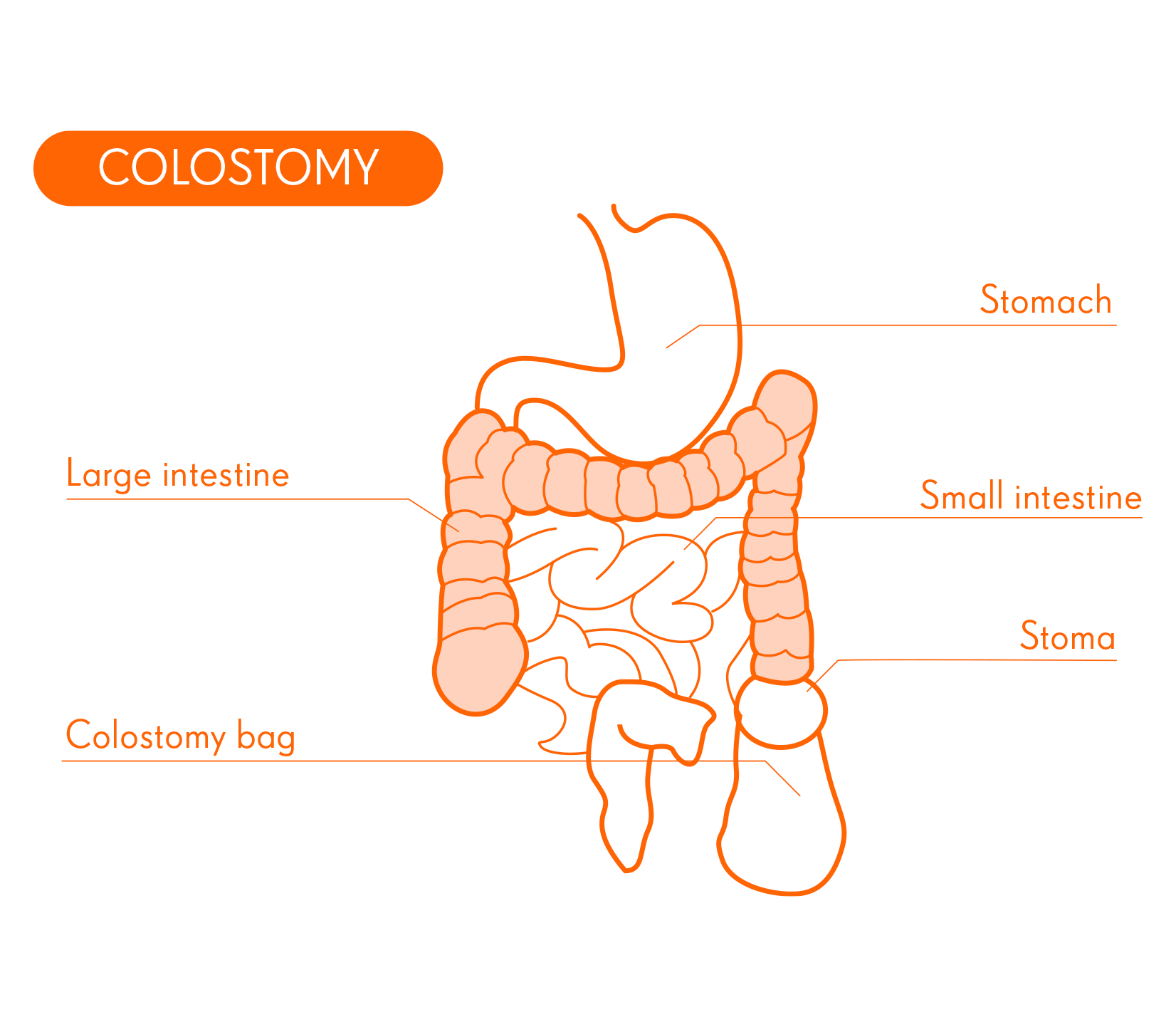A colostomy is a surgery to divert the large intestine through an opening in the stomach and the placement of a bag that collects your stools. In colostomies, the stool will be thick or even solid and will generally be discharged only at certain times of the day. Once the colostomy has been placed and is well adapted and tolerated, the aim is to follow a balanced and varied diet without any added special dietary restrictions.

WHAT DO WE RECOMMEND?
Eat in a relaxed environment, keeping your mouth closed, and chewing well, to avoid an excessive formation of gas and large pieces of food coming out of the ostomy (chewing too little increases the risk of obstruction).
Fasting or skipping meals increases the elimination of liquid stools and gas.
It may interfere with the correct adaptation of the colostomy equipment.
After the colostomy, fibre-rich foods should be introduced into the diet according to personal tolerance, until a varied and balanced diet is possible. The time of adaptation may vary for each person. Start with a low-fibre diet and use simple cooking methods, whilst gradually incorporating new foods and forms of preparation and cooking methods.

| Recommended foods and foods to avoid in a low-fibre diet | ||||||||||||||||||||||||||||||||||||||
|
Lactose tolerance should also be checked and it may be necessary to limit milk for the first few days, or use lactose-free versions.
| Example of three-day progression menu | ||||||||||||||||||||||||
|
When having an ostomy, the ingestion of certain types of foods can lead to changes in the consistency of the stool, the appearance of gases, etc. It is important to incorporate foods and preparations little by little to assess their effect and tolerance. The acceptance of each type of food can be very different for each individual. Symptoms that indicate poor tolerance to a specific food are nausea, vomiting, bloating or an increase in the number of more liquid bowel movements through the ostomy. A good alternative is to use a food diary.
| Situations and foods to keep an eye on when having an ostomy | ||||||||||||||||||
|
||||||||||||||||||